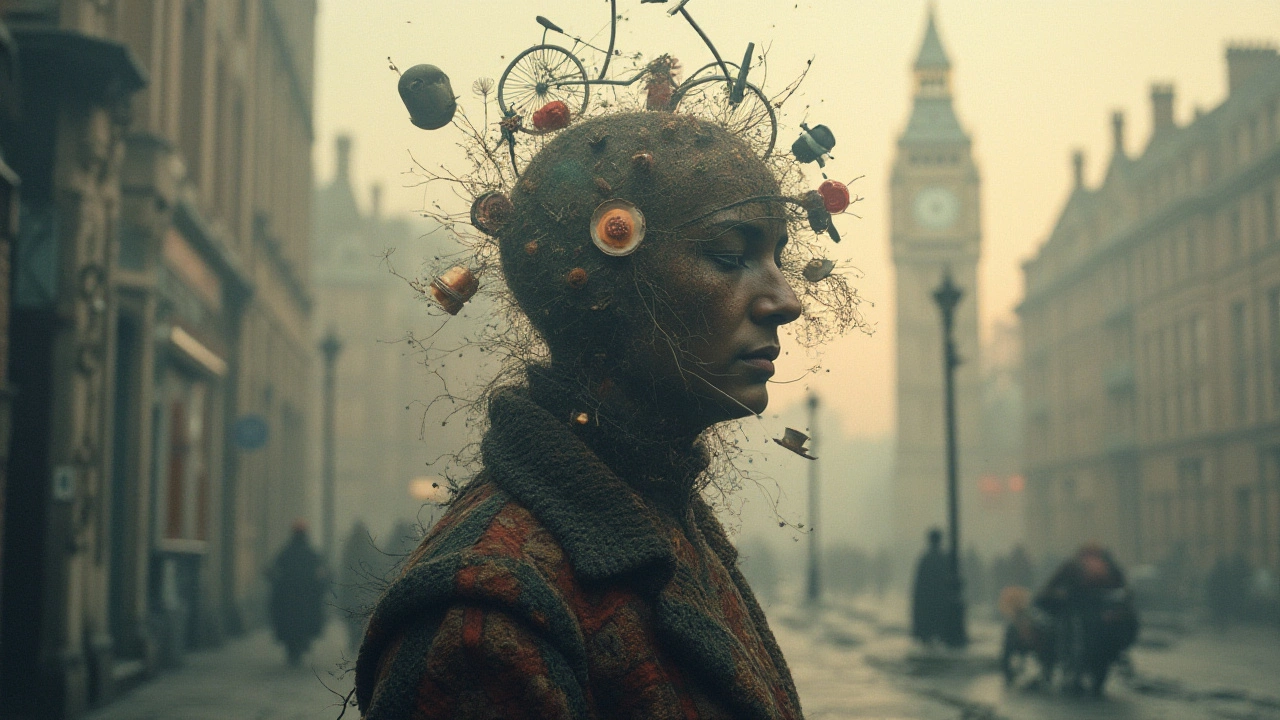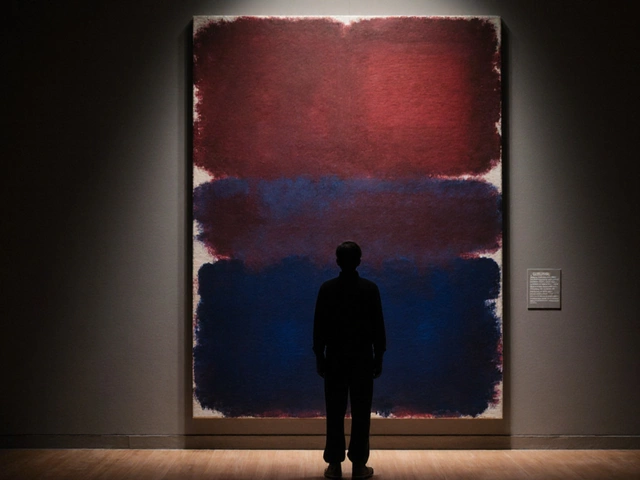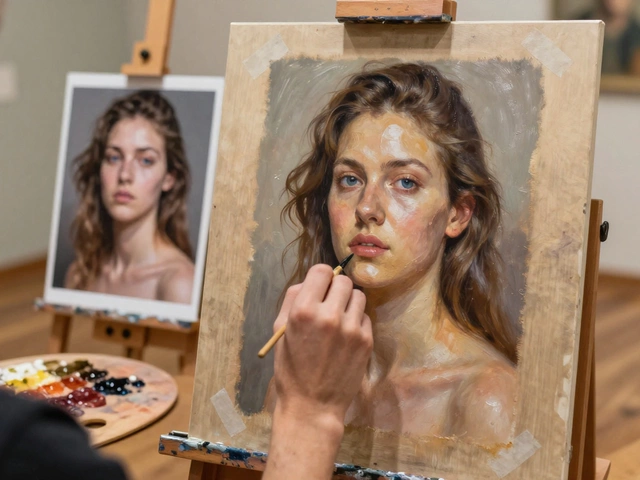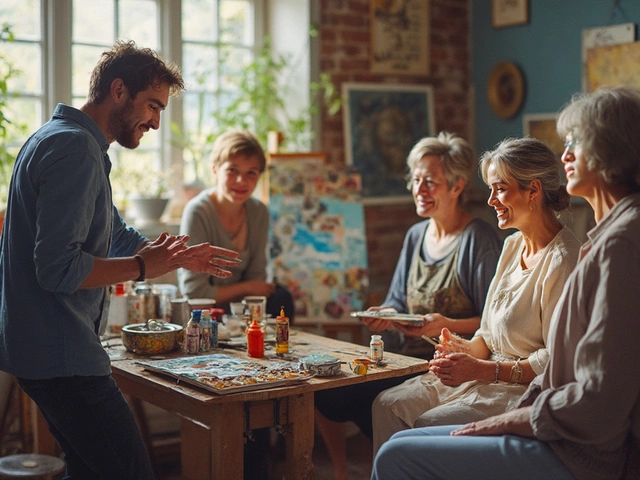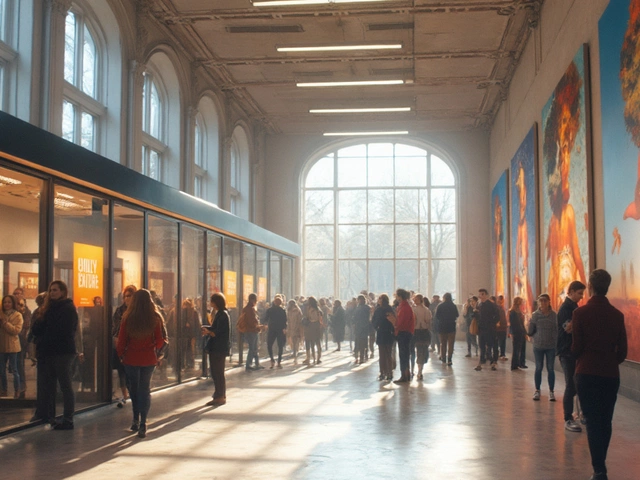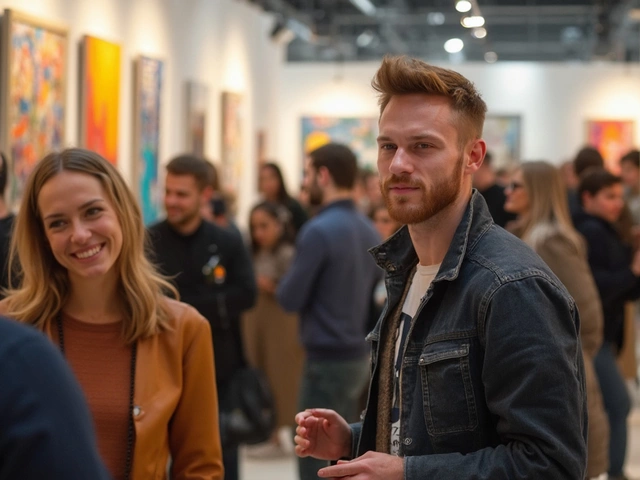When we think of portraits, the image of a painted face, rich with expression, often dances in our minds. The art of capturing a person's likeness has, for centuries, revolved around the face as the focal point of identity and emotion. Yet, as artistic perspectives expand, so does our understanding of what constitutes a portrait.
Today, portraiture is not confined to the visage alone. Artists are exploring a fascinating spectrum of representations that delve deeper than mere appearance. These modern interpretations challenge the notion that a portrait needs to display a face to tell a story or convey the essence of the subject. Through the use of symbolism, abstraction, objects, and even the spaces in which the subject resides, artists have found innovative ways to uncover the facets of identity without traditional facial depiction.
- Understanding Traditional Portraiture
- Exploring Symbolism in Portraits
- The Role of Abstraction
- Conveying Identity Through Environment
- Innovations in Modern Portrait Painting
Understanding Traditional Portraiture
Portraiture has a rich and vibrant history, deeply rooted in the very fabric of art history. It is an art form that tells not just the story of its subject but also paints a broader picture of the time and society in which it was created. Typically, portrait painting has focused on the face as the central element, believing it to be the window to the character and soul of the individual portrayed. Techniques and styles varied widely, from the intricate elegance of the Renaissance masters like Leonardo da Vinci and the detailed realism of Rembrandt, to the expressive modernity of painters like Lucian Freud. What remained consistent was the prominence of the face as the canvas's focal point.
Historically, these portraits were not just about capturing likeness but also served as statements of power, status, or fame. Royalty, nobility, and wealthy patrons commissioned their portraits to cement their legacies. The opulence of attire, the symbolism of objects, and the presence of allegorical elements in their portraits often spoke to the sitter's wealth or accomplishments. An example of such grandeur can be found in the numerous portraits of Queen Elizabeth I, which intended to highlight her regality and divine right to rule.
"Every portrait that is painted with feeling is a portrait of the artist, not of the sitter," remarked Oscar Wilde, noting the indelible bond between creator and creation.As time evolved, so did the portrayal techniques; yet even as the Impressionists began to challenge realism and aesthetics, the face largely remained central, capturing nuanced expressions and fleeting moments of life with audacious brushwork.
The materials and tools used in traditional portraiture likewise have an illustrious history. Artists utilized various mediums, from the polished surface of oil paints to the textured warmth of pastels. Their mastery of light, shadow, and form enabled them to capture not just the physical attributes but the psychological essence of their subjects. This mastery was not just technical; it was emotive, as painters strove to convey the inner life of their subjects through their use of color and brushstroke. In more classic traditions, these portraits often required rigorous sitting sessions, with subjects having to pose for extended periods, bringing forth a discipline and patience that is reflective of both the artist’s and the subject’s dedication to the craft.
Traditional portraiture, in its essence, laid the foundation for understanding human identity and form, building a bridge from past to present. It's fascinating how these portraits offer a glimpse into the past, a visual record of individuals' identities, clothing, stature, and sometimes even their personalities. Viewing a traditional portrait today is akin to reading a historical document. The brushstrokes are the words, the composition is the narrative, and the expression within the subject's eyes often asks the observer questions about the human condition that remain timeless. Despite the strong anchoring in traditions, the subjectivity in capturing the likeness carried its share of creative liberties, offering not just photographic precision but an amplified image reflecting the artist's interpretation. As we continue to explore what a portrait can be, understanding these deep roots helps us appreciate the contemporary shifts and new interpretations in the art form.
Exploring Symbolism in Portraits
The language of symbols offers a rich tapestry through which artists can communicate ideas, themes, and emotions without overt reliance on facial expressions. In the realm of portrait painting, symbolism opens up avenues to portray subjects in multifaceted ways, capturing the viewer's imagination and inviting them into deeper narratives. Objects, colors, and even gestures become carriers of meaning, shaping the identity of the subject and telling stories that transcend the individual's mere physical appearance. This approach engenders a conversation between the observer and the piece, often revealing more about the subject and the artist than a literal depiction could. In eras such as the Renaissance, hidden symbolism was imbued into portraits, offering layers of interpretation for the discerning eye, with each detail carefully chosen to add to the overall narrative of the work.
It is intriguing how certain objects can evoke profound psychological and emotional responses. A feather perched in a corner can signify the lightness of being or the ephemeral nature of life. Colors hold potent symbolic power too. For example, green has been associated with growth and renewal in many cultures, yet in others, it might allude to envy or wealth. By deliberately choosing the symbolic elements, artists wield the power to imbue portraits with depth and resonance, making every gaze upon the work a new discovery. Consider the work of Livio Scarpella, an artist known for his intriguing use of metaphysical elements in sculptures that challenge traditional portraiture, drawing connections between human forms and abstract concepts.
Kandinsky once said, "Color is a power which directly influences the soul." Similar sentiment is echoed in portrait symbolism where the unseen becomes visible through color language, tapping into a universal consciousness.
In some instances, entire social or political statements are encapsulated within these symbolic portrayals. Take Picasso’s "Les Demoiselles d'Avignon," which is not a traditional portrait but revolutionized the concept through abstraction and symbolism, projecting anxieties of modern society while using forms that stripped back superficial elements. Many contemporary artists leverage this technique to draw attention to societal issues without the confines of traditional portrait composition. The choice of materials can also be symbolic, with artists opting for unconventional mediums—be it digital realms or organic matter—to amplify their message, blurring the lines between art and commentary.
A fascinating element within portrait symbolism is the choice to portray not the person, but an aspect of their life or personality through metaphorical representation. An artist might avoid the face altogether, focusing instead on symbols of the subject's hobbies, beliefs, or challenges, offering a glimpse into something more profound. This method allows visual art to transcend the physical, delving into the intangible realms of identity and experience. Imagine a portrait where the essence of a musician is captured through swirling notes and instruments rather than their visage—a display of passion and dedication without relying on conventional facial features.
Symbols offer a universal language that jumps the bounds of culture and language, drawing upon shared human experiences and beliefs. The efficacy of symbolism in portraiture ensures this art form remains a dynamic and evocative domain, engaging viewers in an interactive dialogue that encourages personal interpretation. With each symbol carefully entrusted with meaning, the portraits manifest into medleys of personal and collective psyche, forever resonating with those who behold them. As artists continue to explore and expand, the palette of symbolic elements in artistic interpretation continually grows, inviting new connections and creative explorations of identity.
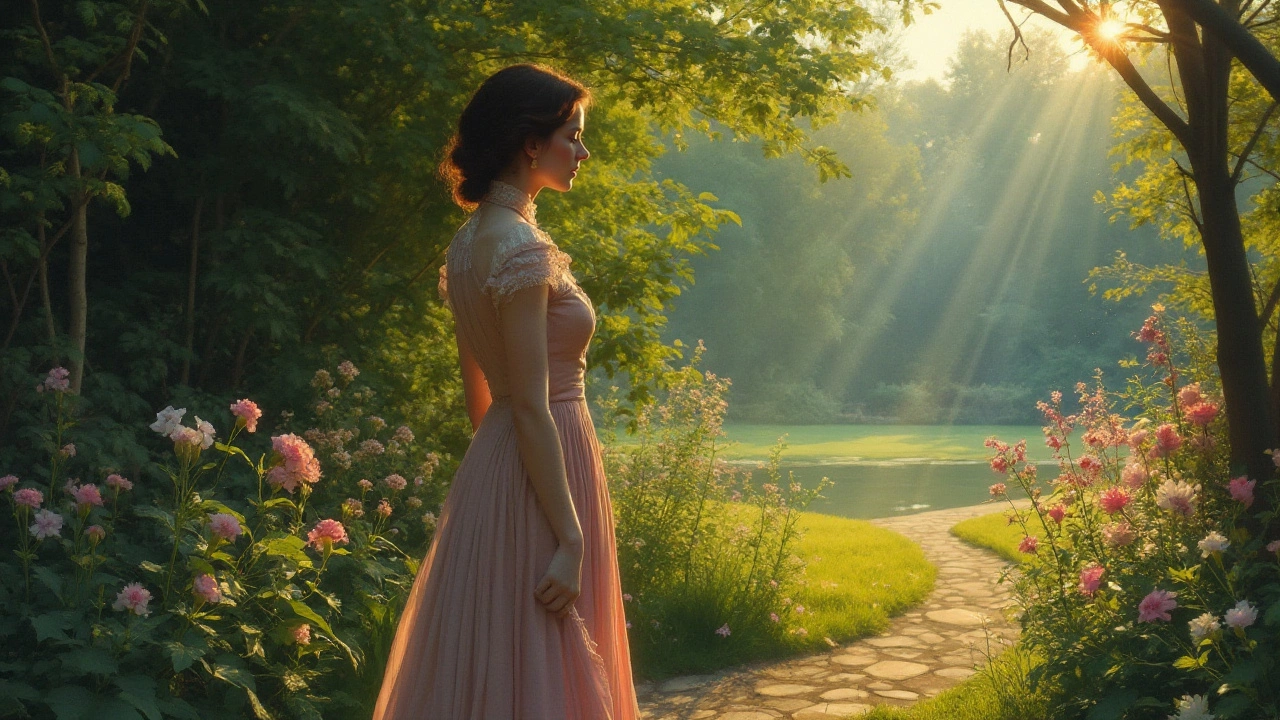
The Role of Abstraction
Abstraction in the realm of portrait painting unlocks an entirely different universe of possibilities where the essence of a subject is captured through shapes, colors, and textures rather than precise anatomical accuracy. This artistic avenue throws open the doors to a broader form of interpretation, inviting viewers to engage with the art on a more personal and emotional level. It can be said that abstraction allows the artist's subjective vision to merge seamlessly with the viewer's imagination, creating a mutual dialogue where identity is both fluid and dynamic. The strength of abstraction lies in its ability to strip away the overt and invite speculation about what lies beneath the surface of the painted canvas.
Within this framework, abstraction is often used to capture the intangible elements of a person's character or the emotional undercurrents running through their life. By moving away from specific facial representation, artists can depict complex emotions and abstract concepts like longing, joy, or isolation through a play of colors and forms. For instance, Wassily Kandinsky's work often leveraged color and geometric shapes to evoke emotions, influencing how we perceive someone or something on an intrinsic level. In this way, abstraction encourages viewers to ponder the deeper aspects of the identity portrayed—even when that identity is decidedly faceless.
The Language of Symbols
Symbols can enhance abstract portraits by providing a metaphorical lens through which viewers can interpret the depicted subject's identity or story. An artist might use a series of recurring motifs or patterns as a shorthand for certain traits or emotions that define the essence of a person. This symbolic language becomes a part of the visual narrative, interwoven naturally with the artist's style, offering a unique profile that penetrates deeper than surface-level association. For example, the inclusion of certain elements like hands, often depicted in various forms of grasping or releasing, serves as powerful metaphors for human emotion and interaction.
The artist Paul Klee once described his process as not capturing the face, but capturing the soul of his subjects through abstract representation. "Art does not reproduce the visible; rather, it makes visible," he famously stated, underscoring the philosophy behind abstraction in portraiture.
Abstraction can also act as a unifying force in compositions that blend different elements of a subject's identity into a cohesive whole. The intricate patterns of abstract art allow for multiple interpretations, making it possible for one viewer to perceive strength where another might see vulnerability. Artists can ingeniously layer various symbols and color schemes to pay homage to the multifaceted nature of identity itself, thereby creating portraits that resonate on multiple levels.
Statistics and Trends in Abstract Portraiture
As a reflection of the growing acceptance and popularity of abstract art in modern society, abstract portraiture has witnessed a notable rise in recent years. Recruitment data from galleries worldwide indicate that exhibitions featuring abstract portraits have increased by a margin of 40% over the past decade. Despite traditional portraits maintaining their importance, the increase showcases changing preferences among contemporary audiences who crave personal connections with art that challenge conventional norms. This trend mirrors a broader shift towards inclusivity and diversity of thought within the art world, allowing voices that were once marginalized to step into the spotlight.
Conveying Identity Through Environment
Portraits have, for many years, centered on faces, but there’s a growing trend of capturing a person's essence using their environment. This approach, known as environmental portraiture, aims to present the subject's identity through the surroundings they inhabit, be it their home, workplace, or favorite outdoor space. The shift from narrowing the focus on facial features to embracing a wider context has liberated artists to experiment with how identity can be expressed. Travel back to the days when artists like Vermeer painted individuals amidst their daily activities, capturing subtleties of their world.
The environment in which people live can speak volumes about who they are. For instance, a writer might be depicted amidst towering stacks of books and dimly lit lamps, each element telling a story about their inspirations and solitude. A gardener could be painted entirely surrounded by lush plants and earthy tones, with well-worn tools at their feet, suggesting a life rooted in the soil. The composition and choice of elements can convey as much about a subject as their facial expressions. In many circles, this approach encourages us to see the environment as an extension of the self.
According to a piece published in Art Journal, "An environment captures elements of a soul that a mere facial expression cannot."
By situating subjects within their personal spaces, artists can delve deeper into aspects of their lifestyle, passions, and even unspoken narratives.What might be an ordinary setting for one person could reveal profound aspects of another's personality and values, offering insights that transcend the surface. It’s a liberating thought for artists that they needn’t rely solely on physical features to portray someone’s character.
In this genre, details are paramount. Consider the portrayal of artists within their chaotic studios, colors blending into a symphony of creative chaos, or a musician's corner filled with instruments waiting for a melody. More than a backdrop, these environments animate aspects of their craft or life philosophy, giving the viewer context and depth. While traditional portraiture presents visual likeness, using the environment enshrines a narrative, making the artwork resonate on multiple levels. Take notice of how the environment frames the figure, a technique offering as much importance, if not more, than the sitter's posture or gaze.
An interesting aspect observed in modern portrait painting is the inclusion of digital environments to portray younger generations. Here the lines blur between reality and the virtual spaces they frequent. One might wonder how today's artists use vibrant LEDs and digital artifacts to express an identity that integrates technology deeply. The choice of what to include or exclude says a lot about what the subject wants to avoid or highlight about their existence. As experts in artistic interpretation note, what remains unseen is often just as crucial as what is painted.
In practical terms, incorporating environments into portrait painting involves a balanced blend of composition and storytelling. Artists must strike a delicate balance between presenting the subject's environment and ensuring it doesn’t overpower them. Yet, doing so successfully pulls the audience into a dialogue, asking them to look beyond what they see, encouraging them to understand — sometimes imperfectly — who the person truly is beneath the veneer of their surroundings. This exploration fosters a deeper, more nuanced appreciation of portrait painting as a medium of profound expression.

Innovations in Modern Portrait Painting
In the dynamic world of modern art, portrait painting has evolved significantly, challenging the traditional boundaries that once defined it. This evolution stems from a profound curiosity among artists to understand and express identity in multifaceted ways. As the realm of visual art expands, so too does the concept of what a portrait can be, moving beyond the mere depiction of facial features. Today, artists use a variety of mediums and techniques to explore the human condition, often without ever showing a face, and this innovative approach invites viewers to question their own assumptions about identity and representation.
The use of non-traditional materials has become a hallmark of contemporary portrait painting. Artists like Mickalene Thomas, known for her rhinestone-studded depictions, challenge the conventional by using intricate textures and materials to build layers of meaning. Her work often explores themes of race, gender, and sexuality, using its very medium to comment on the complexities of individuality. This blending of texture and subject invites viewers to see the subject in a novel light, encouraging them to seek deeper connections beyond the superficial.
This resurgence in creative methodologies also sees the rise of digital art forms in portraiture. Using digital brushes and pixels, artists like Refik Anadol create immersive, data-driven portraits that interact with the environment or the digital persona of their subjects. These artistic interpretations signify a shift from static portraits to dynamic representations that are alive with technology. Such creations explore the duality between our digital footprints and our physical selves, debating the impact of virtual identity in a rapidly digitizing world. The subtle blend of data and design spins a modern narrative that is both mesmerizing and thought-provoking.
Emotional Storytelling Through Environment
Modern portraiture frequently incorporates elements from the subject's environment, presenting a broader context for storytelling. Take, for example, the works of Kehinde Wiley, whose large-scale portraits feature subjects in classical poses set against vibrant and patterned backgrounds. By placing these individuals within such elaborative environments, Wiley tells stories that transcend the individual, embedding them in socio-political narratives. Such background settings become a crucial element of the portrait itself, creating a dynamic interplay between subject and space.Minimalism also has its place in innovative portrait painting, where the emphasis lies on fewer visual elements to produce greater emotional impact. Artists like Egon Schiele employed stark lines and minimal colors to portray raw emotion and complex psychological states. His work is devoid of adornment, allowing the starkness of the imagery to evoke deep empathy. This modern minimalist approach challenges traditional methods by suggesting that less can indeed be more, particularly when striving to convey emotion in its purest form.
A considerable aspect of innovation involves the active engagement of viewers. Interactive installations and exhibitions breathe life into the static art form, inviting viewers to become part of the artwork. 'The Visitors' by Ragnar Kjartansson is a sound installation that, although not a painting, serves as a compelling template for engagement in portraiture. Viewers walk through different rooms, absorbing snippets of performances that, collectively, form a portrait of loneliness and friendship. Such works testify to the endless possibilities within modern portrait painting and the myriad ways artists invite us to redefine our perceptions.
The renowned artist Marina Abramović once said, "The function of the artist in a disturbed society is to bring up the questions, to open consciousness, and to elevate the mind." This poignant insight reflects the drive behind modern innovations in portraiture, as artists challenge, provoke, and expand the confines of tradition.
